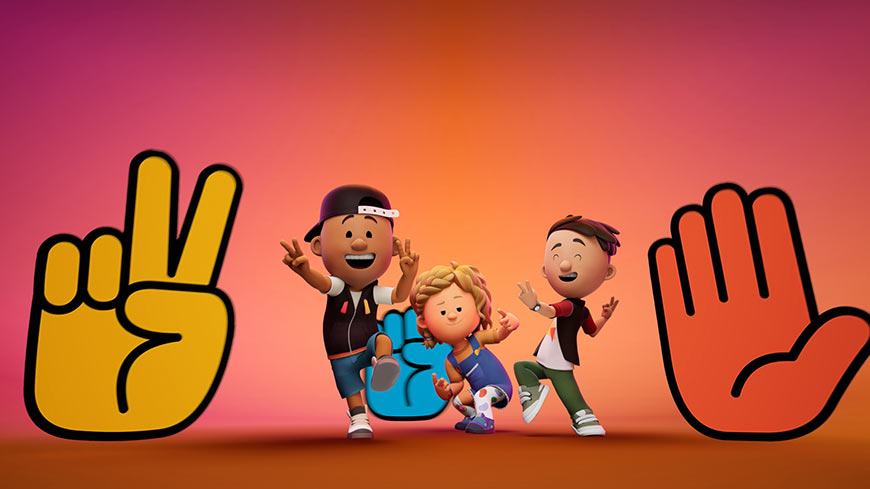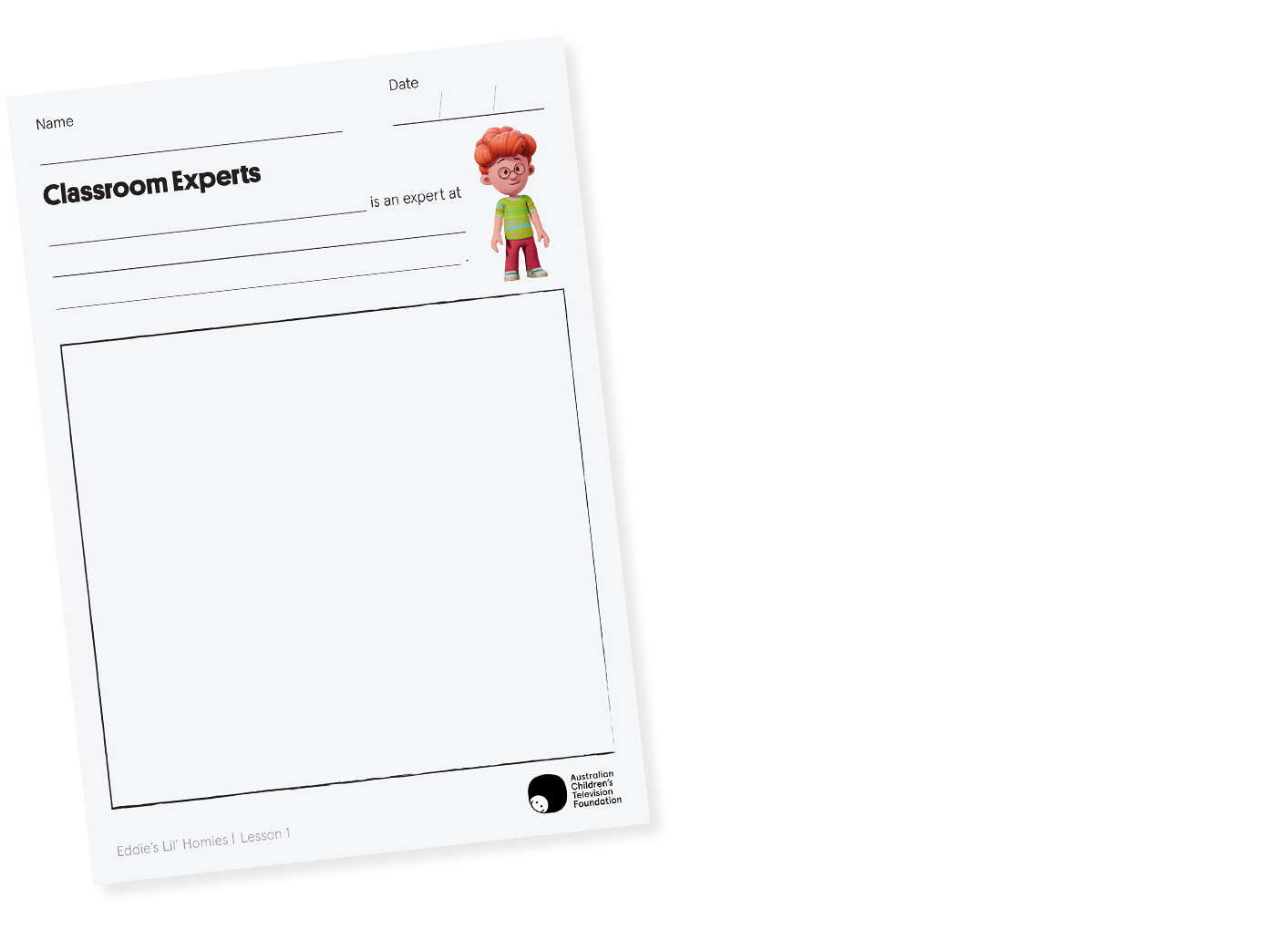In this lesson, we are learning to:
- Understand what personal strengths are.
- Identify strengths in others.
- Identify and communicate our personal strengths.
We acknowledge and respect the Traditional Owners of lands across Australia, their Elders, Ancestors, cultures and heritage, and recognise the continuing sovereignties of all Aboriginal and Torres Strait Islander Nations.
We respectfully acknowledge the Wurundjeri People of the Kulin Nation, who are the Traditional Owners of the land on which the ACTF is based and pay our respect to their Elders past and present.
We are honoured to have the opportunity to learn from the oldest cultural storytellers in the world and seek to support Aboriginal and Torres Strait Islander practitioners to share their rich culture and perspectives with children in Australia and around the world via stories on screen.
Aboriginal and Torres Strait Islander people should be aware that this website may contain images, voices or names of deceased persons in photographs, film, audio recordings or text.
In this lesson, we are learning to:
Episode: ‘Rock, Paper, Eddie’ – Tal learns that he can achieve anything if he puts his mind to it.
Find 'Rock, Paper, Eddie' on NITV, Netflix or SBS On Demand.

Begin this lesson by engaging the class in a short game of ‘Who am I?’ Focussing on a particular student in the class (without naming them), read aloud a series of strengths that will slowly reveal the student’s identity. For example: ‘I am a kind big brother. I care about the environment. I am funny and I enjoy making people laugh. I am great at soccer.’ Ask students to draw on their prior knowledge about classmates to help identify the mystery person.
In a class discussion, have students reflect on the guessing game.
Now try playing ‘Who am I?’ in reverse. Nominate a different student by name and ask the class to share clues about this person, always remaining respectful and kind.
Explain to students that this game involved identifying and naming someone’s personal strengths. We all have personal strengths that are unique to us, and these contribute to our identities. A person’s strengths can include their positive personality traits, knowledge and abilities.
Identifying and communicating our strengths helps us to understand ourselves better: it builds ‘personal awareness’. This knowledge helps us see the skills we already have and those we may need to develop further. Learning to identify our personal strengths also helps us recognise and appreciate the strengths of other people.
In the Eddies Lil’ Homies episode titled ‘Rock, Paper, Eddie’, Tal learns that he can achieve anything if he puts his mind to it. While viewing, ask students to focus on the characters’ different strengths.
Are these strengths fixed, or can they change over time?
Tal’s storyline provides an opportunity to discuss growth mindsets; our abilities, skills and strengths can improve over time.
Assign students to small groups to discuss the characters’ strengths.
Following this discussion, invite student groups to share their thinking with the wider class. Record strengths vocabulary on the whiteboard or an anchor chart to support writing in the next activity.
Next, allow students to apply these understandings and skills by collaboratively creating ‘strengths chains’ for each other. Place a pile of pre-cut strips of coloured paper at each student’s desk or sitting spot, or have students write their names on a sticky note to identify their place. Then have students circulate the room, writing a personal strength for each of their peers (or a pre-determined number of peers if time is limited). These could include character strengths, social strengths, academic strengths and more.
At the end of this exercise, each student will have a series of paper strips listing strengths their classmates have identified in them. They can then use sticky tape to create paper chains with the strips. Chains can be displayed around the classroom and added to as new strengths develop, or you might choose to join the chains to illustrate that we are stronger when we work together.
To encourage reflection on personal strengths and enable students to demonstrate their understanding, ask each student to reflect on their traits, abilities, knowledge and dispositions. Then have students complete a page for the ‘Classroom Expert’ book. For example, students may share that they are good at spelling, know how to tie shoelaces, or are fun to play with. Someone may even be an ‘RPS’ champion! Pages can be stapled or bound together, creating a helpful and affirming book for the class library.

Foundation |
Year 1 |
Year 2 |
|
Critical and Creative Thinking |
|||
Identify, process and evaluate information |
Identify and explore relevant points in information provided on a topic. |
Identify and explore relevant information from a range of sources, including visual information and digital sources. |
|
English |
|||
Language |
AC9EFLA08Recognise and develop awareness of vocabulary used in familiar contexts related to everyday experiences, personal interests and topics taught at school |
AC9E1LA09Recognise the vocabulary of learning area topics |
AC9E2LA09Experiment with and begin to make conscious choices of vocabulary to suit the topic |
Literature |
AC9EFLE02Respond to stories and share feelings and thoughts about their events and characters.AC9EFLE04Explore and replicate the rhythms and sound patterns of literary texts such as poems, rhymes and songs |
AC9E1LE02Discuss literary texts and share responses by making connections with students’ own experiences.AC9E1LE04Listen to and discuss poems, chants, rhymes and songs, and imitate and invent sound patterns including alliteration and rhyme |
AC9E2LE02Identify features of literary texts, such as characters and settings, and give reasons for personal preferences.AC9E2LE04identify, reproduce and experiment with rhythmic sound and word patterns in poems, chants, rhymes or songs |
Literacy |
AC9EFLY02Interact in informal and structured situations by listening while others speak and using features of voice including volume levels. |
AC9E1LY02Use interaction skills including turn-taking, speaking clearly, using active listening behaviours and responding to the contributions of others, and contributing ideas and questions. |
AC9E2LY02use interaction skills when engaging with topics, actively listening to others, receiving instructions and extending own ideas, speaking appropriately, expressing and responding to opinions, making statements, and giving instructions. |
Health and Physical Education |
|||
Personal, social and community health |
AC9HPFP01Investigate who they are and the people in their world. |
AC9HP2P01Describe their personal qualities and those of others, and explain how they contribute to developing identities. |
|
Personal and Social Capability |
|||
Personal awareness |
Identify their likes, dislikes, strengths, abilities and interests, and describe how these influence choices. |
Describe personal qualities and how these contribute to growth. |
|
Reflective practice |
Identify how their choices affect the development of personal abilities and achievements. |
Describe what they have discovered about themselves by engaging with feedback. |
|